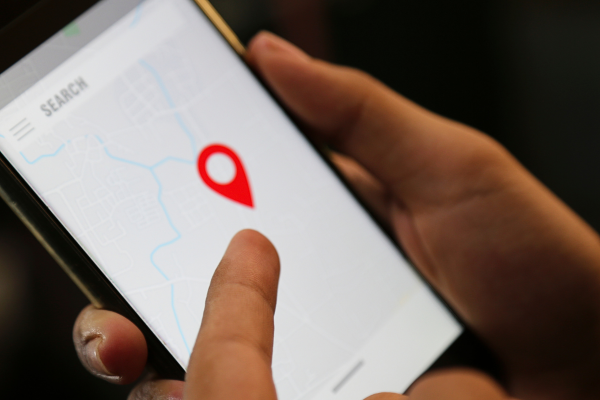The Best Apps to Recover Your Deleted Photos
The best apps to recover your deleted photos can be a lifesaver when you lose important images from your phone or computer.
Losing such files can be a major problem, especially when they contain cherished memories or essential information. Fortunately, there are several solutions available to help you retrieve these lost images.
In this article, you’ll learn about the best apps to recover your deleted photos, how to use them effectively, and valuable tips to prevent losing files in the future.
Why Are Photos Lost?
Before exploring the best apps to recover your deleted photos, it’s important to understand why they disappear. Some of the most common reasons include:
- Accidental deletion: This happens when we delete files without realizing it.
- Storage issues: Corrupted memory cards or malfunctioning hard drives.
- System updates: Some updates can cause temporary file loss.
- Malware or virus attacks: These can damage or delete important files.
No matter the reason, it’s reassuring to know that technology can be your ally in bringing these memories back.
The Best Apps to Recover Your Deleted Photos
Below is a list of the most effective and popular apps on the market for recovering photos:
1. DiskDigger
DiskDigger is one of the best-known apps for recovering deleted photos from Android devices.
It works by scanning the device’s memory and locating files that haven’t been overwritten. Its free version is efficient for recovering photos, while the paid version allows recovery of other types of files.
- Highlights:
- Easy to use, even for beginners.
- Allows you to restore directly to the device or email the recovered files.
2. EaseUS Data Recovery Wizard
For those needing a more robust solution, EaseUS Data Recovery Wizard is highly recommended. It works on Windows, macOS, and even mobile devices. This app can recover files from HDDs, SSDs, SD cards, and USB drives.
- Highlights:
- Recovers photos from formatted or corrupted devices.
- Intuitive interface and support for over 1,000 file formats.
3. Recuva
Recuva is a free program for Windows that allows you to recover deleted files from your computer, including photos, documents, and videos. It’s ideal for those looking for a reliable, no-cost tool.
- Highlights:
- Deep recovery mode to find old files.
- Preview function before saving the recovered images.
4. PhotoRec
PhotoRec is an open-source tool available for multiple platforms, including Windows, macOS, and Linux. It’s specifically designed to recover images and other types of media.
- Highlights:
- Compatible with various file systems (NTFS, FAT, exFAT).
- High success rate for image recovery.
5. Dr.Fone – Data Recovery
Dr.Fone is one of the most comprehensive tools for Android and iOS users. In addition to recovering deleted photos, it also restores messages, contacts, and other types of data.
- Highlights:
- Beginner-friendly interface.
- Selective recovery: choose only the files you want to restore.
6. Undeleter
For Android users, Undeleter is another powerful option. It allows you to recover deleted files, including photos, videos, and documents. It’s especially useful for files stored on SD cards.
- Highlights:
- Quick recovery for recently deleted files.
- Backup options to prevent future losses.
7. iMobie PhoneRescue
If you’re an iPhone user, iMobie PhoneRescue is an excellent choice. It helps restore deleted photos, even those removed from the iOS trash.
- Highlights:
- Compatible with iCloud and iTunes.
- High recovery rate for iOS devices.
How to Choose the Best App?
When selecting the best apps to recover your deleted photos, consider the following factors:
- Compatibility: Ensure the app works on your device’s operating system.
- Ease of use: Choose a tool with a user-friendly interface, especially if you’re inexperienced with data recovery.
- Additional features: Check if the app offers extra functionalities, such as automatic backups or support for various file types.
- Cost: Some tools are free, while others require payment. Evaluate the cost-benefit of each option.
Tips to Prevent Photo Loss
While there are great apps to recover your deleted photos, prevention is always the best strategy.
Taking proactive steps to protect your digital memories not only saves time and effort but also ensures your precious files are safe from unexpected issues. Here are some enhanced tips to help you safeguard your photos:
1. Back Up Regularly
Regular backups are your first line of defense against photo loss. Use cloud storage solutions such as Google Photos, iCloud, or Dropbox to automatically sync and store your photos.
Cloud services provide easy access to your files from any device and offer protection against hardware failures or accidental deletions.
To add an extra layer of security, consider creating offline backups on an external hard drive or USB flash drive.
Pro Tip: Set up automatic backups to ensure your files are always up-to-date without requiring manual intervention.
2. Use High-Quality Memory Cards
The quality of your storage devices plays a crucial role in the longevity of your photos. Cheap or counterfeit memory cards are more likely to fail, leading to corrupted files or total data loss.
Always invest in trusted brands like SanDisk, Kingston, or Samsung, and choose cards with high write and read speeds for optimal performance.
Pro Tip: Avoid using the same memory card for long periods without reformatting it (after backing up your data). This helps prevent errors caused by prolonged usage.
3. Avoid Overwriting Files
When you accidentally delete a photo, stop using the device immediately. Continued use increases the likelihood of overwriting the deleted data, making it impossible to recover.
Avoid taking new photos or installing large apps on the device until you attempt recovery with an appropriate tool.
Pro Tip: If your device has a recycle bin feature (such as Google Photos’ trash folder), check it first before assuming the files are permanently deleted.
4. Install Reliable Antivirus Software
Malware or viruses can wreak havoc on your devices, potentially corrupting or deleting your photos.
Installing reputable antivirus software helps protect your files from threats and keeps your device running smoothly. Regular scans and updates are essential to ensure the software stays effective against new security risks.
Pro Tip: Be cautious when downloading files or apps from unknown sources, as they might contain malicious software designed to target your data.
5. Organize Your Photos
Disorganized photo libraries can make it difficult to keep track of important files, increasing the chances of accidental deletion.
Create well-structured folders with clear labels (e.g., “Vacations,” “Family,” or “Work”) and periodically declutter your library to remove duplicate or irrelevant files.
Pro Tip: Use photo management apps like Adobe Lightroom or Google Photos to help organize and edit your library efficiently.
6. Enable Automatic Trash Recovery
Many smartphones and photo management apps include a temporary trash or recycle bin feature that stores deleted files for a specific period (e.g., 30 days). Enabling this feature can give you a grace period to recover photos before they’re permanently erased.
Pro Tip: Check the settings in your photo apps or gallery to activate and configure this feature for added security.
7. Be Careful During System Updates
System updates are necessary to keep your device secure and functional, but they can sometimes result in data loss if performed incorrectly.
Before updating your phone or computer, back up your photos to a secure location to ensure nothing is lost in the process.
Pro Tip: Avoid interrupting updates once they’ve started, as this can lead to incomplete installations and potential data corruption.
8. Educate Yourself on Recovery Options
Understanding how recovery tools and methods work can help you act quickly in case of data loss.
Familiarize yourself with the recovery options offered by your device’s operating system or third-party apps so you’re prepared to handle emergencies.
Pro Tip: Bookmark articles or guides on using data recovery tools for easy access when you need them most.
By following these tips, you can significantly reduce the risk of losing your photos and ensure that your precious memories are always within reach.
Prevention may take a little extra effort, but it’s a small price to pay for the peace of mind that comes with knowing your digital memories are safe and secure.
When to Seek a Professional?
If even with the best apps to recover your deleted photos, you cannot recover the images, it may be necessary to seek help from a data recovery specialist.
Specialized companies have advanced tools that can access data stored on damaged or formatted devices.
Recovering deleted photos doesn’t have to be a stressful or expensive process. With the best apps to recover your deleted photos, like DiskDigger, EaseUS, and Dr.Fone, you can bring back important memories in just a few steps.
Additionally, adopting preventive measures, such as regular backups and using antivirus software, is essential to avoid future losses.
Don’t leave your photos behind! Try the tools mentioned in this article and recover your most valuable memories today. Share this content with friends and family who can also benefit from these tips.






